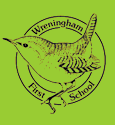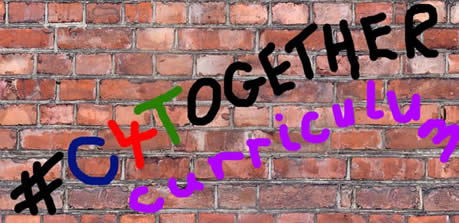
This Term's Theme is;

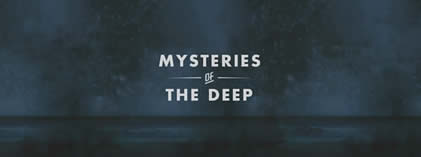
This Weeks Activities:
Instructions are in RED
Friday 1st May:
Science
1. Task Completion
This afternoon is a good chance to finish yesterday's Nesie design if it's not done: remember, this is not really an art task, you need to design a creature which is scientifically designed to survive and stay hidden, with a fully labelled drawing, with additional information - you can't do this without researching Loch Ness.
Take pride in your final design.
2. Sign Language Week 2 - Feelings and Emotions
Click here to take you to our new sign language page for our current Friday afternoon task.
Thursday 30th April:
Science
This task may take more than one day
Last week, we learnt a little about Charles Darwin, and how his study of the different types of finches helped him formulate his theory of survival of the fittest, natural selection and evolution.
First of all, click here to find out a bit more about his theories and watch a short film which neatly summarises his life's work.
Task 1: After watching the short film, create a mini-mind-map in your book, and write 5 important facts or details about Darwin and his work, around the edge.
Task 2: Design Your Adapted Loch Ness Monster:
Now we are going to get creative, and revisit a strange creature we encountered this week - designing how the monster should really look if it has adapted to survive in the Loch, without being seen clearly, or caught.
Follow the instructions below.
Don't just sketch a quick, careless picture - spend time today and tomorrow researching, thinking and designing the perfect elusive,Loch Ness Monster. this is not just a 'draw a monster task' -
use science to help you design it (and don't copy what everyone thinks the monster should look like (like the picure above)- yours might be quite different !
Watch and Learn First:
First we need to learn a little bit about 'adaptation', and this short video on bytesize should do the trick, followed by a brilliant 5 minute film showing how actual animals have very precise adaptations - which your Nessie may have similar.:
BBC Bitesize - A short, fun film about 'Adaptation'
BBC Teach - A fantastic 5 minute film about adaptation.
Now Design Your Adapted Nessie:
Now, your task is to 'design', draw, colour and label what you think the Loch Ness monster should really look like if it has adapted perfectly to living unseen in Loch Ness for thousands of years. You are a scientist.
1. Click here if you want a design sheet in Powerpint ( can edit)
2. Click here if you want a design sheet in .pdf.
3. Click here for a copy of these instructions in .pdf
As scientists, we know that it may take millions of years for an animal to evolve into something quite different to that which it started out as, but we are going to speed up Nessie's evolution and adaptation for this task.
Would such a mnoster so clever at staying unseen really look like this?
Let's suppose Nessie was originally some kind of water dwelling dinosaur when it first got trapped in the Loch, which was formed about 10,000 years ago (although Loch Ness is connected to the sea by rivers and streams).
Label parts of your monster to show it's physical adaptations - it's features, colour, type of body, what it uses to move in the water etc. Also make notes around your picture about how it's adaptations help it survive, it's behaviours, it's diet, when it is most active, and how it's adaptations allow it to be unseen.
You must do some research about Loch Ness and take into account the following issues which will affect how your monster is 'designed'.
a. Food Supply in the Loch:
- What other animals and plants live in the Loch as a
food source: this will affect the monsters method of
eating and consequently it's physical makeup
(e.g.
does it need sharp, tearing teeth or flat grazing
teeth, or does it need to swim fast and is it a
predator ?)
b.:Conditions in Loch Ness:
- Temperature will affect the type of skin, scales, or
coat the monster will have evolved.
- How deep the water is will affect it's swimming
ability, and whether it has gills to breathe
underwater, or is it a mammal which needs to come
to the surface to breath air like a whale?
- It's shelter/hiding place is important as it is able to
stay unseen.
Are there caves in Loch Ness, or vegetation it can
hide in, and if so, does it need a particular type of
camouflage?
c. It's ability to remain unseen by humans:
- How does it stay hidden?
Can it hear or sense human activity on and out of
the water?
How does it do this - what physical features and
behavioural features does it have to help?
d. How have it's senses evolved?:
- How does it see - does it have large eyes to see in
dark conditions or at night (like a bush baby),
or does it not have eyes like the salamandar in the
video?
- Have it's other senses evolved to compensate?
dolphins, and bats, for example, can use echo
location(like a radar) to 'see' things.
- Does it use its sense of hearing well - think about
foxes in the video?
Great work from CD belwo - no long neck here....
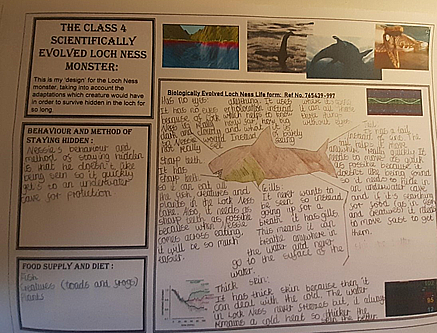
Wednesday 29th April:
Geography - Rivers and Coasts:
Today we are going to be investiagting how the Norfolk coast has changed using Digimap. Please click below to find out about your task.
Tuesday 28th April:
Art and Design:
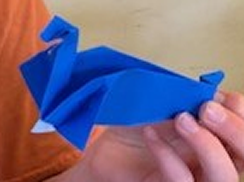
The first Nessie to arrive...
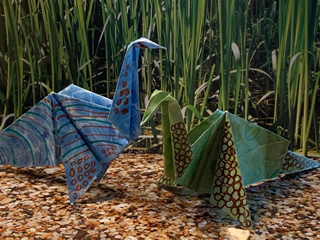
Here's JJBs fanastic Nessie family with a background added
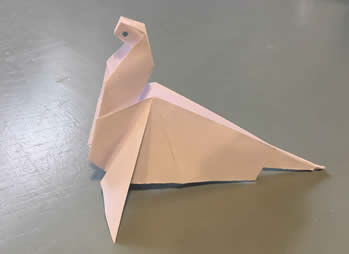
A beautiful pure white Nessie from DL
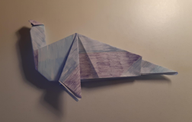
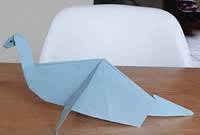
Purple/ blue camouflage on CDs Nice pastel blue from MC
As our termly topic is 'Under the Sea: Mysteries of the Deep', I thought it would be a good idea to create some artwork around the subject:
Activity 1:
We'll start off with a little under-water mystery - the legend of the Loch Ness Monster. Many think this monster is actually a pleisosaur, left over from the age of dinosaurs. Here's a great little origami task to create your own.
It would be a great idea to colour the paper in first and let's see if we can have a whole groups of incredibly designed Loch Ness Monsters for a monster wall. You might want to cover it in intricate patterns, rainbow shades or scales aor feathers - make it imaginative then send me a photo.
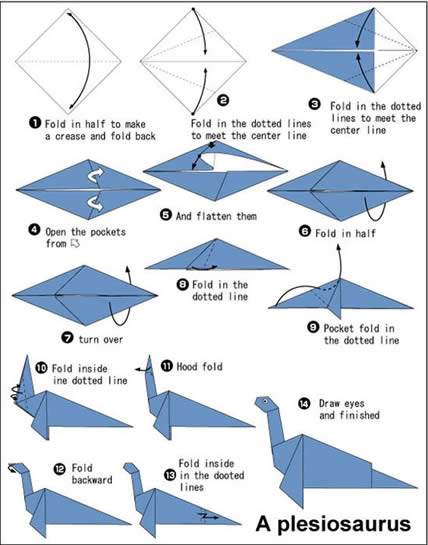
If you want to download a copy, or see it onscreen in
more detail, click here.:
Activity : Statue's of Atlantis
Lots of you have done Atlantus research from last week, and maybe even drawn Plato's description of Atlantis - I know I've seen some great artwork of the legendary city beneath the waves.
In many of the depictations of Atlantis beneath the waves, the artist include huge statues of Gods (such as Poseidon and his trident, or fantastic mythological sea creatures. We are going to do some copy sketching to create our own crumbling under-sea statues.
What do I need :
You only need a pencil today - so everyone can have a go in the front of your book..
Today you can show those careful pencil sketching and shading skills we have done many times in class. Remember:
1. Don't push too hard on the paper, and lightly build up you drawing.
2. Look carefully at the areas in shade and light.
3. Remember, this is a grey, stone statue, so using lots of short, straight sketched lines will add to the effect of stonework.
I'll post some pictures to copy, below, or you can access a powerpoint or pdf here:
1. Atlantis statues to copy Powerpoint
2. Atlantis statues to copy pdf
Extra Challenge: parts of the statue may have crumbled away beneath the ocean - can you adjust your own version of the copied statue to show this: a head may have fallen off, part of an arm, or fin.
Have a look after the photos at my attempt - lots of straight lines and shading - oh, and the head fell off my Neptune.
I'll post up some of my attempts and some help sheets if you're not sure how to do it, in the morning (it is getting verry late now)
Outcome: This is what we are looking - great effort MH
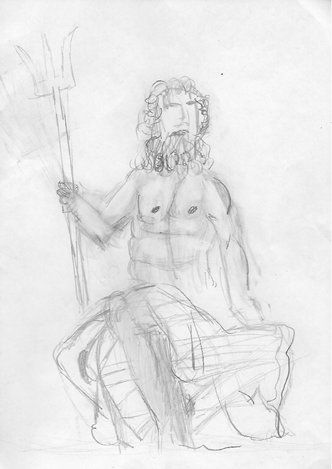


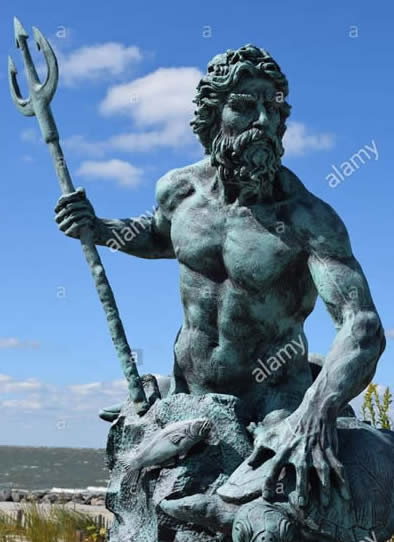
Here's my example - I drew a simple lines to get the shape, then built it up. I decided his head would have fallen off with years under the sea. Finally, I added some sea-weed and jelly fish as a final touch.
1. 2.
3. the hands are tricky - just start with stick-man hands.
4. I built up around the body, shaded more on the left as that side is in shadow. .
Finsh off with some under sea features - jelly-fish and sea-weed and plants.
You may want to add some subtle colour to these features if you have coloured pencils, watercolour. Don't colour the statue.
Monday 27th April:

P.E. - The School Games Virtual Challenge:
Today is the first day of the School Games Virtual Challenge so this afternoon we've got P.E. in the sunshine ( hopefully).
Just go back to the #C4TOGETHER page and click on the P.E. Wall (i'll also put at link in the top right on this page). You'll find your virtual challenge instruction there.

